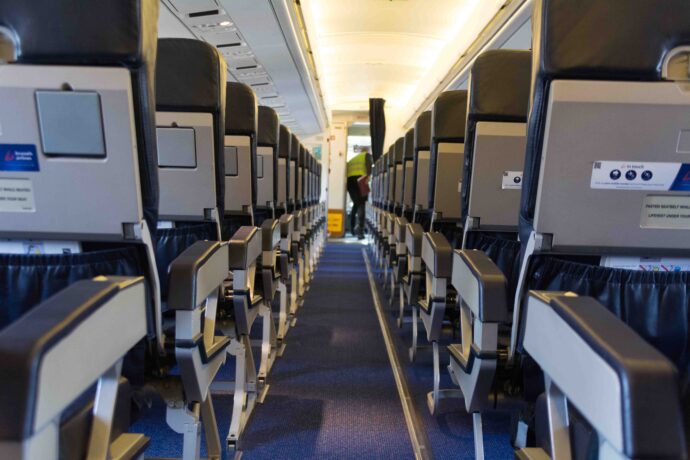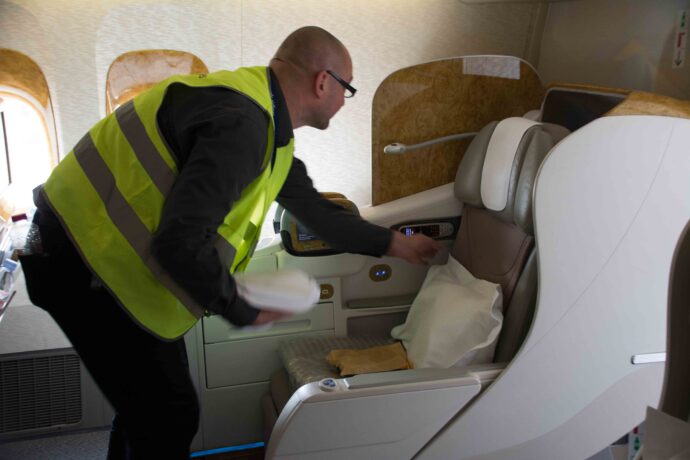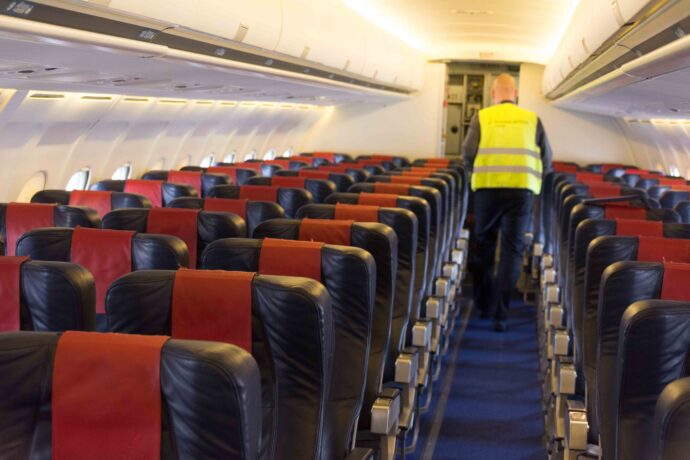Every day, our mobility masters take care of cleaning an average of about 100 aircraft per day. During peak times, this number can increase to up to 115 planes per day. Quickly converted, this equates to the cleaning of approximately 40,000 aircraft annually. Achieving this requires meticulous planning and organization. Our mobility masters provide an overview of how this sometimes incredibly hectic planning process unfolds.
Cleaning an average of 100 planes per day
Imagine you are at the airport, ready to depart for your destination. You approach the gate and see the plane through the large windows. However, you have to wait a bit before boarding begins, and there’s a reason for that. One of the reasons is that the aircraft needs to be cleaned before boarding starts. This is where our mobility masters come into play. They have to clean the aircraft in just 10 minutes. And that for an average of 100 planes per day.
Aircraft cleaning: flexible planning as a requirement
Cleaning an average of 100 planes per day necessitates thoughtful planning and a significant amount of flexibility. Steven, Duty Manager at Mobility Masters, explains, “Several months in advance, we receive the customer’s preliminary summer and winter schedules. That’s where the ball starts rolling. Which planes are arriving? When are they landing, and from which location? Also important: what type of cleaning is needed? Because a large or very dirty planes naturally requires a longer cleaning time than smaller aircraft. Based on that schedule, we start sorting and scheduling flights per month.”
“On a monthly basis, we request an update from the customer because flight schedules often change. In this update, we also filter by the size of the aircraft because there are approximately 8 ‘long-haul planes’ on a daily basis, which, due to their much larger size, naturally require more extensive cleaning.”
Ronny, Station Manager at Mobility Masters, adds, “We clean the large aircraft with a large team of cleaners, while the small planes that arrive and depart immediately, often European flights, are cleaned with a smaller team. This makes a significant difference in planning.”
The Dispatcher as a central role
Once the monthly schedule is set, our in-house recruitment agency, Recrewtment, comes into play on ‘day -4,’ four days before the beginning of the month. Ronny explains, “We assess whether we need to bring in additional workers to fill gaps in the schedule. On ‘day -1,’ the day before the beginning of the month, we finalize the schedule from our own system. Sometimes, there are last-minute employee cancellations or certain flights are cancelled or added. Then, we fill in the last gaps.”
The daily schedule is then sent to the dispatcher of Mobility Masters on-site. Ronny emphasizes, “Timing is crucial. If an aircraft arrives 5 minutes earlier than planned, the dispatcher must adjust immediately. This summer, for example, we had 17 different planes arriving within a 45-minute timeframe, all needing simultaneous cleaning. You end up quickly coordinating and deploying multiple cleaning teams almost simultaneously. If there’s a delay with one of those planes, you have to adjust the schedule immediately to ensure everything still runs smoothly. That’s the dispatcher’s task, who has an overview of the entire operation.”
Maximum of 10 minutes
How does the aircraft cleaning process work? Ronny explains, “It has to be very fast. Take European flights, for example. These planes have a ground time of 50 to 60 minutes. In that time, deboarding, boarding, personal assistance, and cleaning are all considered. Every plane that lands must be ready for cleaning immediately to keep the ground times as low as possible. For a European flight, a team of cleaners has a maximum of 10 minutes to clean the entire plane.”
“When the plane lands and the last passenger disembarks, our cleaners enter. For a short while, it’s a rush to get everything spotless, from passenger areas to lavatories, kitchens, and even the cockpit. Of course, it also depends on how clean or dirty the passengers leave the plane. Therefore, our cleaners use PDAs (Personal Digital Assistants) to time their work, among other tasks.”
Aircraft cleaning: good communication is essential
These PDAs are indispensable for communication between the dispatcher and the cleaners, as well as between the dispatcher and the customer. Steven explains, “On the PDA, our cleaners receive a notification to go to aircraft X or Y. They check in there. When they start cleaning, they have to send a message on the app that they’ve begun. When they finish, they have to report that too. This allows the dispatcher to immediately deploy them for new flights.”
The PDA is also a handy tool for reporting issues. “If an aircraft arrives very dirty, our cleaners can report this with photos via the PDA. This way, our dispatcher is immediately informed and can alert the customer. It’s then up to the customer to decide whether the flight should still depart immediately or if a longer cleaning is required, leading to some delay.”
Shared vision
In conclusion, aircraft cleaning demands a tremendous amount of flexibility in planning. “It’s a very hectic job, but that’s why we do it. That’s what makes the job so enjoyable. It requires a certain hands-on mentality, from us, the dispatchers, and the cleaners themselves. Everyone has to have the same vision. If, at a certain moment, you find yourself short on cleaners, and there’s a need for more than are available, we, including the dispatchers, are not too proud to pitch in and help clean. It involves getting your hands dirty, but you gain a lot of respect from your colleagues and customers in return.”



